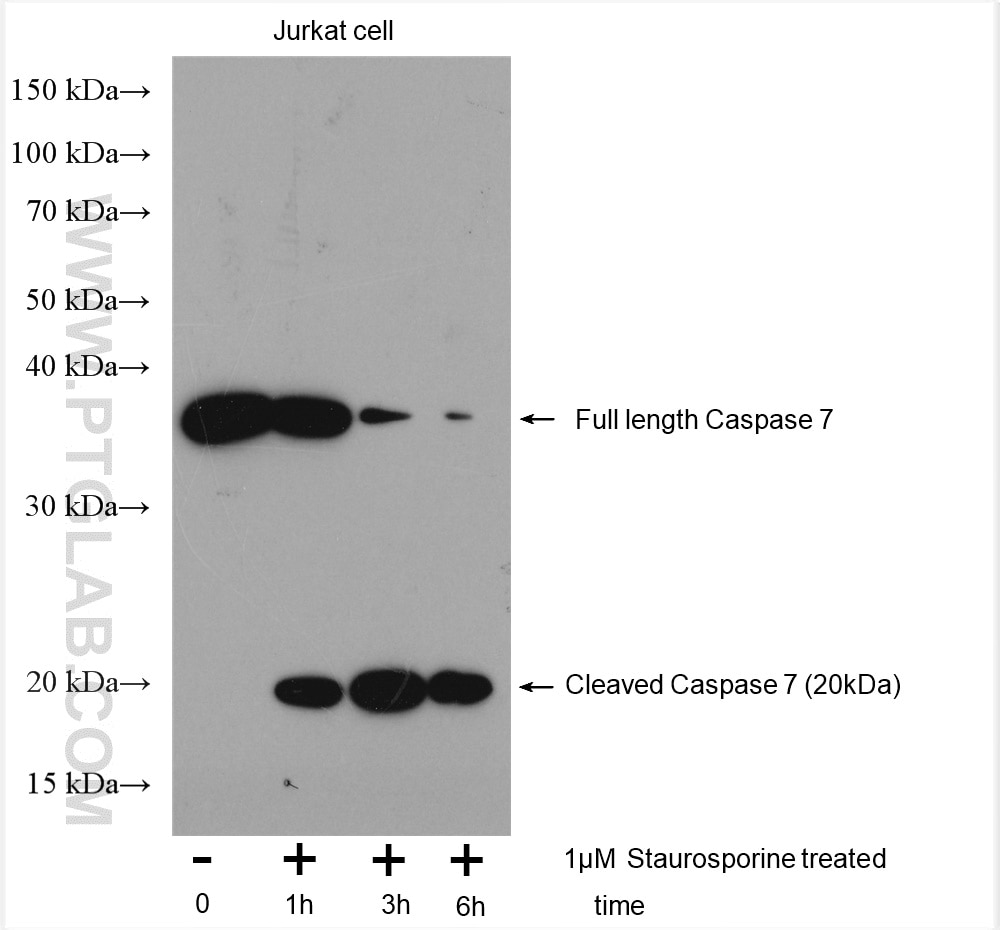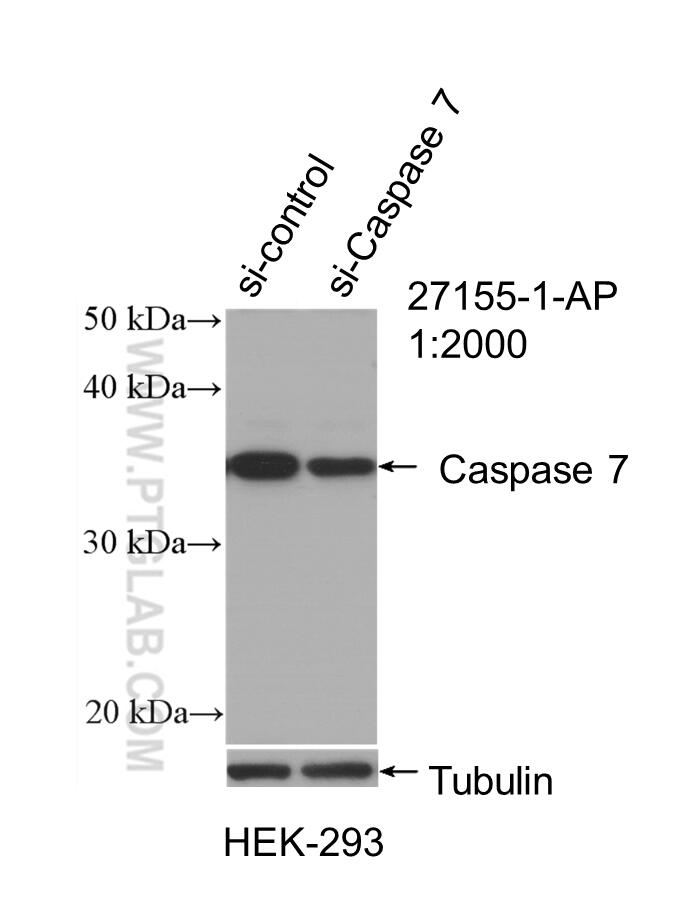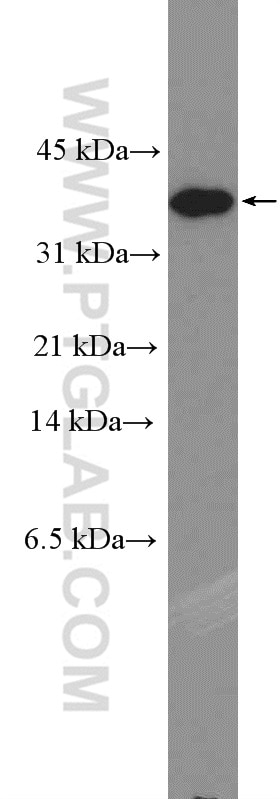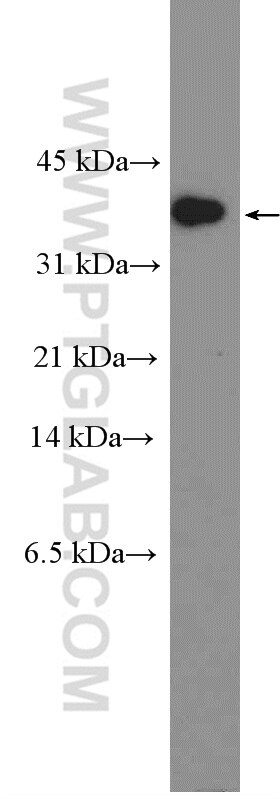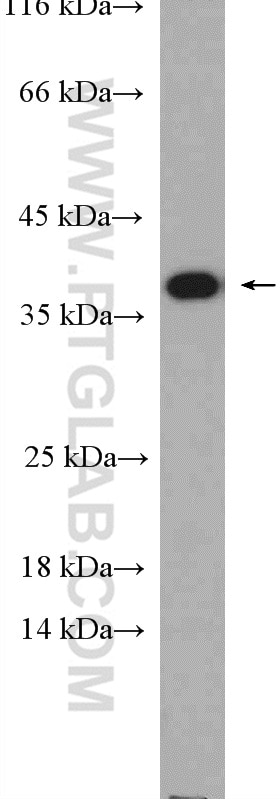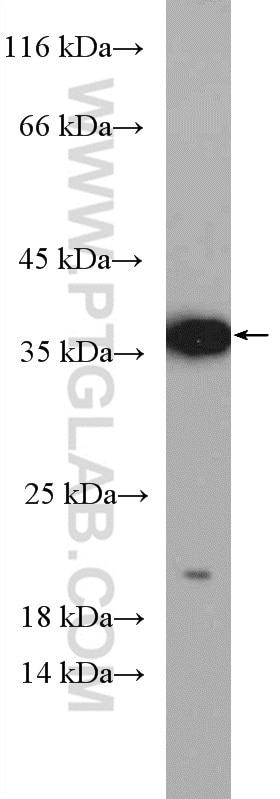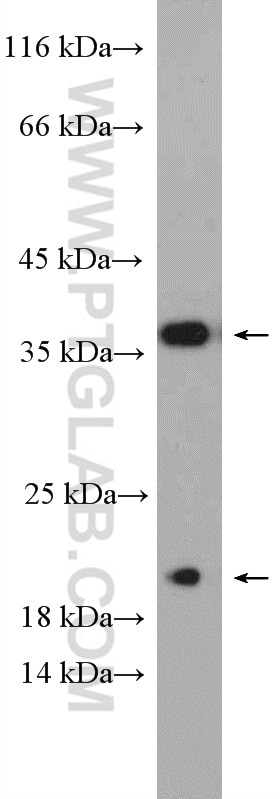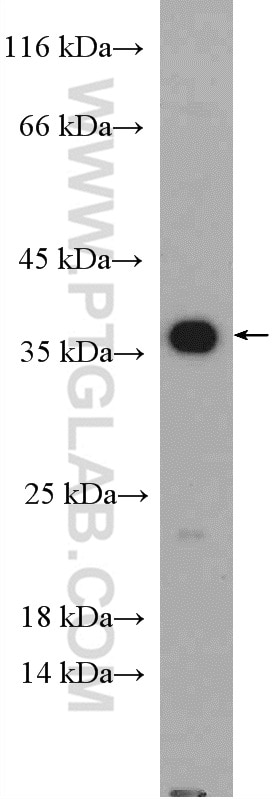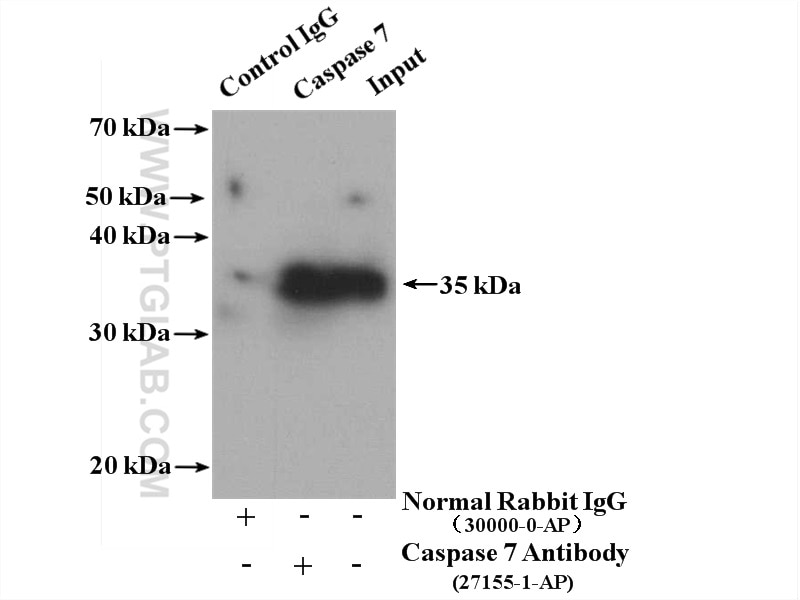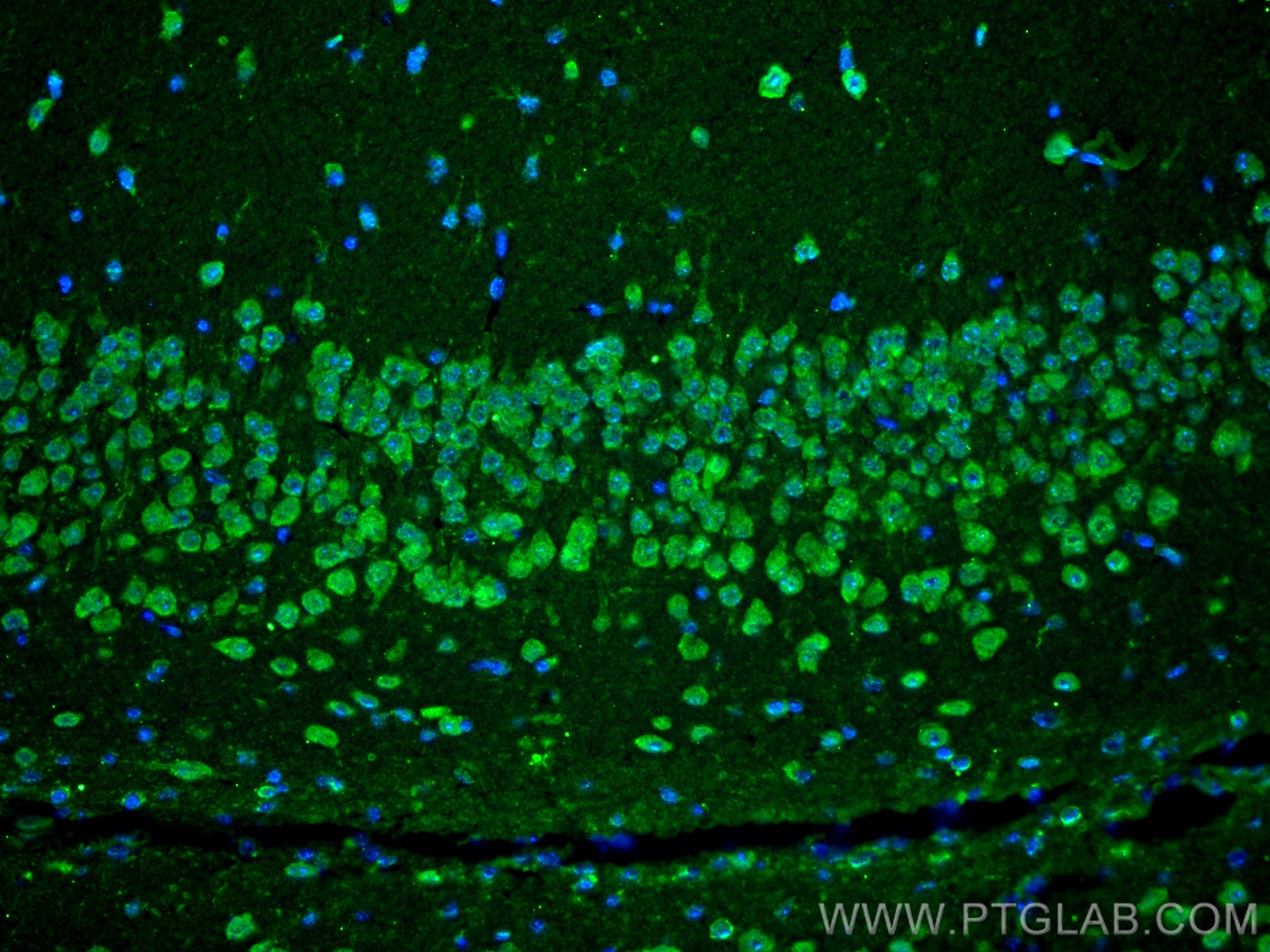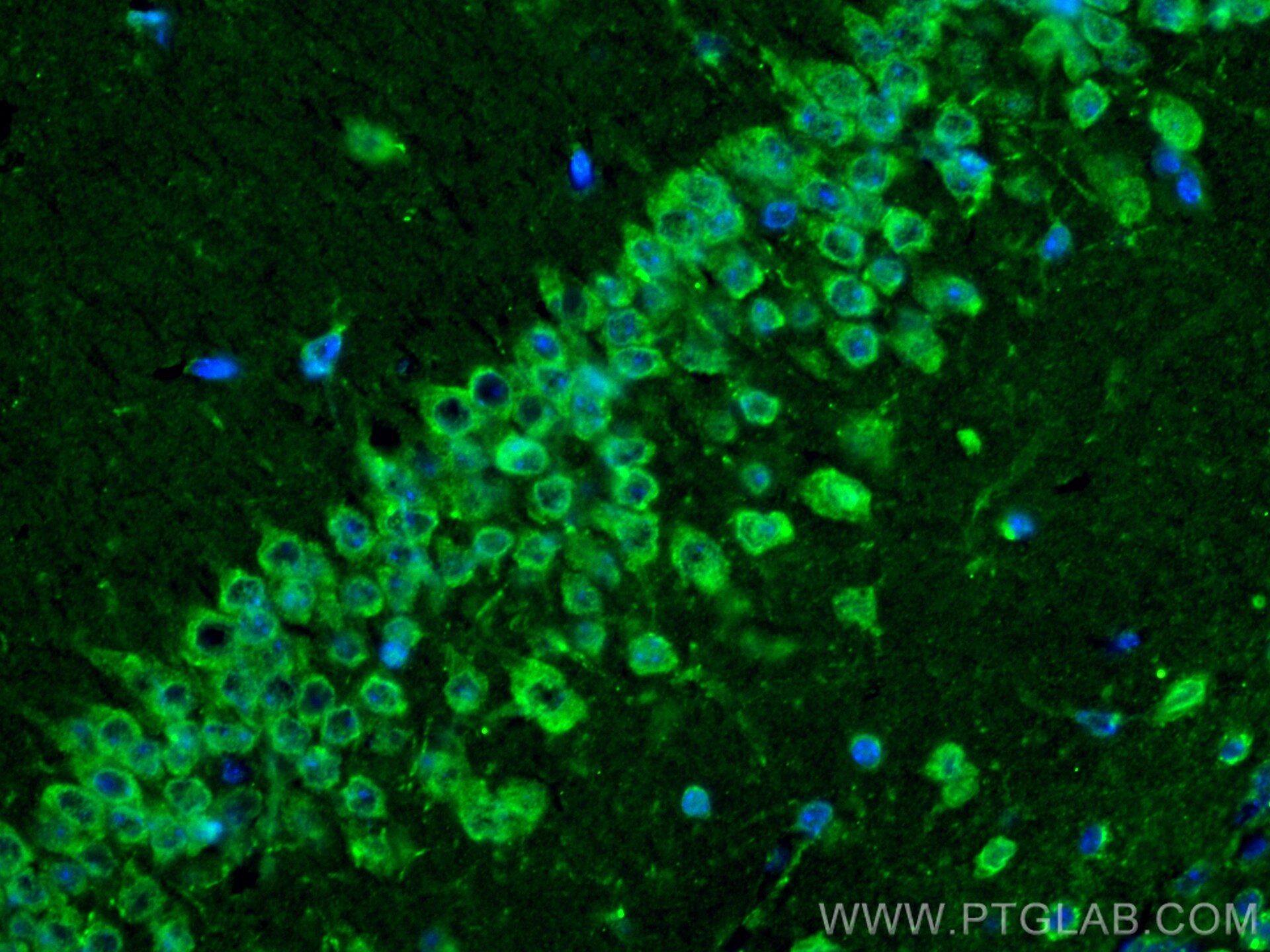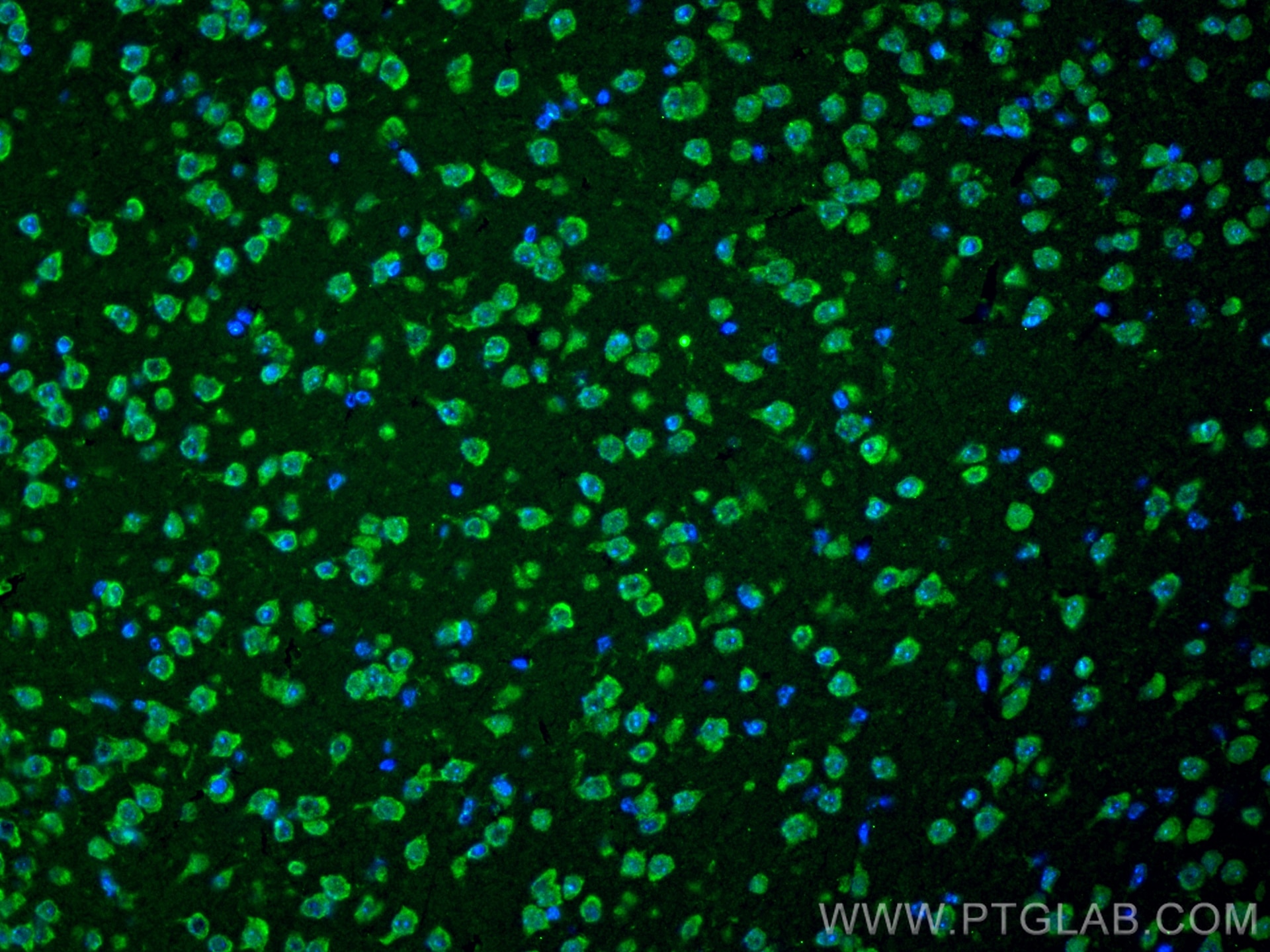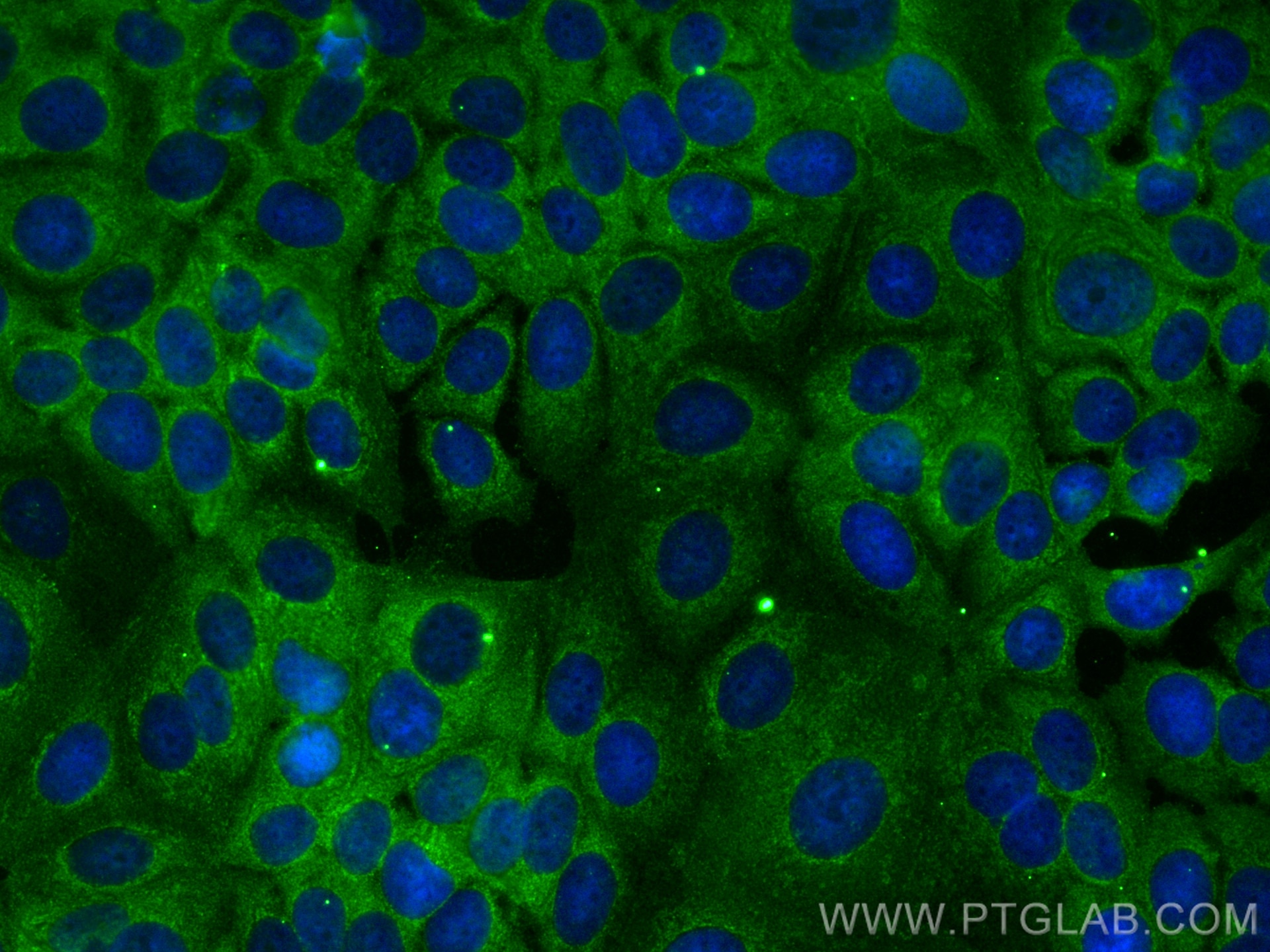- Featured Product
- KD/KO Validated
Caspase 7 Polyklonaler Antikörper
Caspase 7 Polyklonal Antikörper für WB, IF/ICC, IF-P, IP, ELISA
Wirt / Isotyp
Kaninchen / IgG
Getestete Reaktivität
human, Maus und mehr (3)
Anwendung
WB, IHC, IF/ICC, IF-P, IP, ELISA
Konjugation
Unkonjugiert
Kat-Nr. : 27155-1-AP
Synonyme
Geprüfte Anwendungen
| Erfolgreiche Detektion in WB | Jurkat-Zellen, HEK-293-Zellen, LNCaP-Zellen, MCF-7-Zellen, Mauslebergewebe, PC-3-Zellen |
| Erfolgreiche IP | HEK-293-Zellen |
| Erfolgreiche Detektion in IF-P | Maushirngewebe |
| Erfolgreiche Detektion in IF/ICC | MCF-7-Zellen |
Empfohlene Verdünnung
| Anwendung | Verdünnung |
|---|---|
| Western Blot (WB) | WB : 1:500-1:1000 |
| Immunpräzipitation (IP) | IP : 0.5-4.0 ug for 1.0-3.0 mg of total protein lysate |
| Immunfluoreszenz (IF)-P | IF-P : 1:50-1:500 |
| Immunfluoreszenz (IF)/ICC | IF/ICC : 1:200-1:800 |
| It is recommended that this reagent should be titrated in each testing system to obtain optimal results. | |
| Sample-dependent, check data in validation data gallery | |
Veröffentlichte Anwendungen
| KD/KO | See 3 publications below |
| WB | See 67 publications below |
| IHC | See 4 publications below |
| IP | See 1 publications below |
Produktinformation
27155-1-AP bindet in WB, IHC, IF/ICC, IF-P, IP, ELISA Caspase 7 und zeigt Reaktivität mit human, Maus
| Getestete Reaktivität | human, Maus |
| In Publikationen genannte Reaktivität | human, Hausschwein, Maus, Ratte, Rind |
| Wirt / Isotyp | Kaninchen / IgG |
| Klonalität | Polyklonal |
| Typ | Antikörper |
| Immunogen | Caspase 7 fusion protein Ag25904 |
| Vollständiger Name | caspase 7, apoptosis-related cysteine peptidase |
| Berechnetes Molekulargewicht | 303 aa, 34 kDa |
| Beobachtetes Molekulargewicht | 35 kDa |
| GenBank-Zugangsnummer | BC015799 |
| Gene symbol | Caspase 7 |
| Gene ID (NCBI) | 840 |
| Konjugation | Unkonjugiert |
| Form | Liquid |
| Reinigungsmethode | Antigen-Affinitätsreinigung |
| Lagerungspuffer | PBS with 0.02% sodium azide and 50% glycerol |
| Lagerungsbedingungen | Bei -20°C lagern. Nach dem Versand ein Jahr lang stabil Aliquotieren ist bei -20oC Lagerung nicht notwendig. 20ul Größen enthalten 0,1% BSA. |
Hintergrundinformationen
Caspase 7(CASP7), like caspases 3 and 6, contains a short prodomain and, upon apoptotic induction, the 35 kDa proform is converted into a 32 kDa intermediate or preactive form which is further processed into two active subunits consisting of the p20 or large (18 kDa) subunit and the p10 or small (11 kDa) subunit and it is present in the brain, which is up-regulated and activated after traumatic injury(PMID:15953353). Caspase-7 is classified as a member of the subgroup of cysteine proteases most related to the Caenorhabditis elegans factor CED-3, which also includes caspase-3, -6, and -9(PMID:9426061). The protein is involved in the activation cascade of caspases responsible for apoptosis execution.
Protokolle
| PRODUKTSPEZIFISCHE PROTOKOLLE | |
|---|---|
| WB protocol for Caspase 7 antibody 27155-1-AP | Protokoll herunterladen |
| IF protocol for Caspase 7 antibody 27155-1-AP | Protokoll herunterladen |
| IP protocol for Caspase 7 antibody 27155-1-AP | Protokoll herunterladen |
| STANDARD-PROTOKOLLE | |
|---|---|
| Klicken Sie hier, um unsere Standardprotokolle anzuzeigen |
Publikationen
| Species | Application | Title |
|---|---|---|
Nat Commun Macrophage lineage cells-derived migrasomes activate complement-dependent blood-brain barrier damage in cerebral amyloid angiopathy mouse model | ||
J Pineal Res Melatonin synergizes the chemotherapeutic effect of 5-fluorouracil in colon cancer by suppressing PI3K/AKT and NF-κB/iNOS signaling pathways. | ||
Front Immunol Identification of molecular subtypes based on PANoptosis-related genes and construction of a signature for predicting the prognosis and response to immunotherapy response in hepatocellular carcinoma | ||
Phytother Res Targeting HSP90 with picropodophyllin suppresses gastric cancer tumorigenesis by disrupting the association of HSP90 and AKT | ||
Cell Death Discov IDO1 inhibits ferroptosis by regulating FTO-mediated m6A methylation and SLC7A11 mRNA stability during glioblastoma progression |
